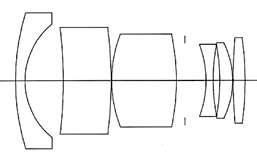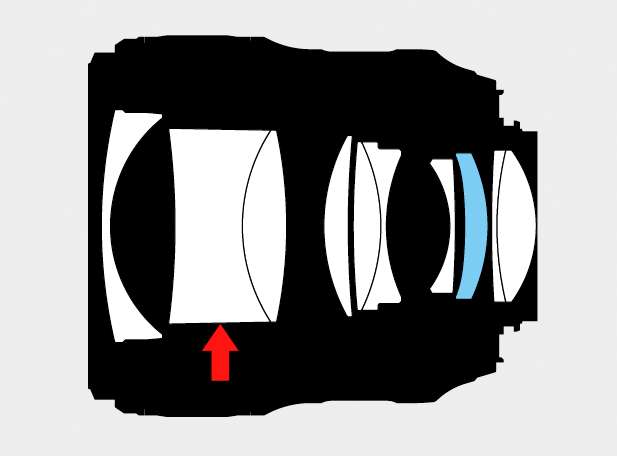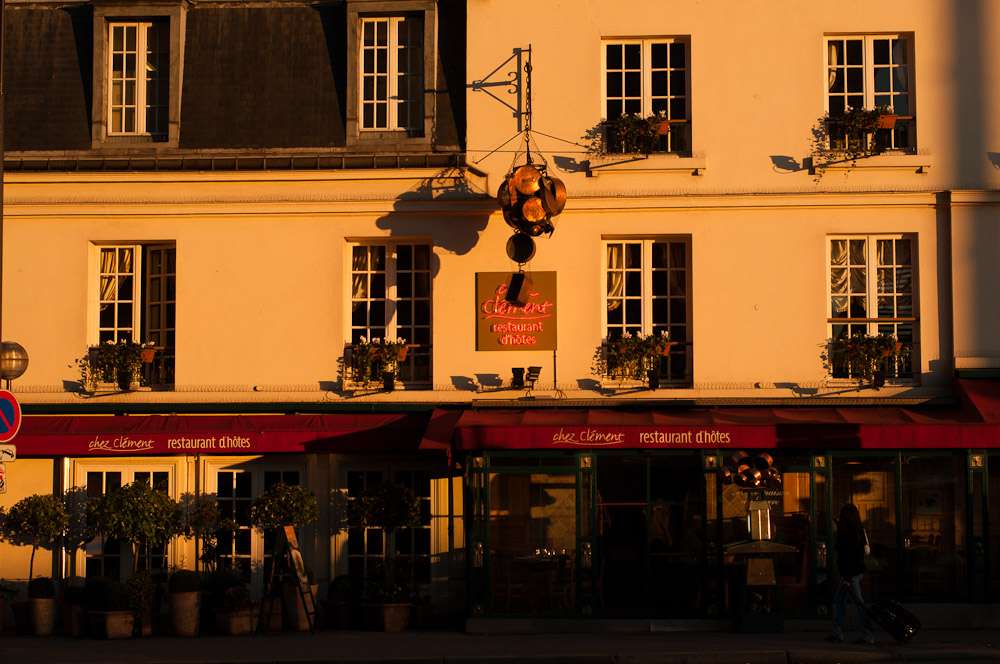Quote:
Originally Posted by Matsu

However, rangefinders clearly retain a size advantage with wide and normal primes.
|
Yeah. Though Leica has also shown an unusual willingness to make small size a high priority in lens design. Most Leica lenses — including the moderate primes — use aspherical elements, and reading between the lines it seems that the primary reason for that is to reduce volume.
In fairness, Nikon does occasionally try to tackle bloat. Obviously in the past Nikon made enormous efforts to standardise on the 52 mm filter size (even the 35 mm f/1.4 I showed above had a 52 mm filter thread!).
Nikon was also a pioneer in the use of thick lens elements to reduce size, employing them since at least the six-element 35 mm f/2.8 of 1975, which looked like this:

The designers of that lens were sent back to the drawing board after submitting an earlier proposal (in the late sixties) which improved optical performance but increased the size of the lens compared to its predecessor. They were told they must improve optical performance while strictly not increasing the length of the lens, or Nikon would abandon the redesign and continue producing the old lens. The designers eventually solved that little conundrum by introducing the two thick elements you see above.
Interestingly, the new 35 mm f/1.4 AF-S uses a thick lens element too:

This thick element reduces overall lens size, though obviously the high optical quality targeted by this lens means that "small" is a relative concept here.
Quote:
Originally Posted by GSpotter

According to reviews, an interesting alternative might be the Voigtländer 40mm f/2.0 Ultron SL II. It's also an "almost-pancake" like manual lens with chip (i.e. similar to a Nikon AI-P lens). |
I did consider that lens, but I really wanted to see what a classic Tessar could do if made with modern, high-index glass. The optical quality and lens speed possible with the basic Tessar design are closely linked to the refractive index (RI) of the glass used: a higher RI leads to better performance and the possibility of a faster speed (f/2.8 is very fast for a Tessar design). Lanthanum and other
rare earth elements can be used to increase the refractive index, leading to better Tessars. Much of the twentieth century was spent developing new glass types with higher refractive indices (among other improved properties), and modern Tessars like my Nikkor 45 mm f/2.8P benefit from that progress.
I offer this handheld photo as proof of the lens's performance when stopped down a bit (though it's decent even at f/2.8):

(With embedded GPS coordinates, if you're interested in seeing the same restaurant in worse light on Google Street View. I now use a Dawntech M3L-S3 GPS to geotag my D300S photos. Open the JPEG in Apple Preview, hit Command-I, click on More Info > GPS > Locate.)
And two full-size (12-megapixel) JPEGs of the same image for self-respecting pixel peepers, from Aperture 3 and Lightroom 3:
Aperture rendition.
Lightroom rendition.
I'm sure you'll agree that's pretty impressive for a tiny four-element lens!
Quote:
Originally Posted by GSpotter

Compare the Olympus 4/3 300mm to the Nikkor 300mm:
129 mm Ø, length 281 mm, weight 3290 g
124 mm Ø, length 267.5 mm, weight 2900g
|
Or the new lightweight Canon: 128 mm Ø, length 248 mm, weight 2400 g.

Quote:
Originally Posted by PB PM

Practically speaking there is no difference between those two. Nobody is going to notice a minuscule 390g difference if they are out shooting all day long.
|
I'd notice a difference of 390 grams (nearly a pound), but I think GSpotter is basically saying what you're saying: even though the Olympus 300 mm lens covers a much smaller sensor than the Nikon, it's actually bigger and heavier than the Nikkor (or roughly the same, depending on your viewpoint). Of course it's used for covering a smaller angle, so the Nikon shooter might need a yet-longer lens.
As you note, short primes can be made much smaller on mirrorless cameras; super-teles, less so.